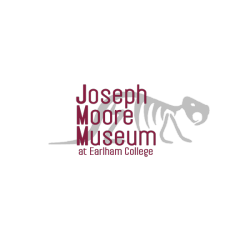As a teacher, I prioritize inclusive practices, such as team-based learning, experiential learning and community outreach in both my science and museum studies courses. I care deeply that students gain confidence and practical skills in my classes in addition to important theoretical understanding. Reading and understanding primary scientific literature is a critical skill that I have invested significant time studying how to best teach (see below). With nearly 20 years of experience, I have taught introductory and advanced courses in ecology, evolution, outreach, museum marketing/communications, and exhibit design as well as led off-campus programs to Hawaii, Germany and New Zealand (see course list below).
Pedagogical research
How can we best empower students to understand, use and write their own primary research literature? I have developed and am studying the Paper Box as an intervention to help early science learning and teaching (undergraduate and high school).
Do you want to teach students to
- Critically read primary literature
- Place research into a broader context
- Rank the importance of research results
- Understand the structure of scientific papers
- Use precise language
While other tools aim to teach students the order in which to read
sections of a research article, how to read critically, or how to
communicate research results to the public (e.g. the Message Box©) the
Paper Box provides a visual framework for summarizing primary
literature. By asking students to answer specific questions, they may
be less likely to simply restate the abstract when preparing a
summary. The "box" format encourages students to answer the questions
in parallel and iteratively, rather than sequentially, leading to a
deeper, more integrated understanding of the research.
How do I use the paper box?
- Practice in class before assigning a paper box
- Have students read a popular account of a research article
- Divide the class into small groups
- Ask the groups to answer the questions from the Paper Box Instructions one-at-a-time
- As a class, discuss each quadrant. Emphasize
- Where in the article the information was found
- Which results are the most important AND best justified
- The difference between a specific research question and the broader research agenda
OR
- Jump right in—hand out the instruction sheet and blank paper
box and ask students to come to class with it
completed. (See an example of a Paper Box completed by an
undergraduate senior here based on this
research article.)
When can I use it?
- Prepare for paper discussions
- Design and prepare for research projects
- Class assignments
- Undergraduate to graduate students
Feedback? Thoughts? Questions?
If you use the
paper box, I'd love to hear what you think about it (or even that you've used it!). You can contact me at
hlerner@gmail.com.
Courses Taught
- Biology and cross-listed Courses
- Ecological Biology with lab (BIOL 111); Evolution with lab (BIOL 451); Marine Biology Seminar (BIOL 471); Hawaiian Islands Biodiversity May Term (OFFC 399); Natural History Museum Curation with two labs (BIOL 240); Advanced Natural History Museum Curation with lab (MUSE 473, BIOL 342); Natural History Museum Collection Management with lab (BIOL/MUSE 123); Introduction to Natural History Museum Interpretation with lab (BIOL/MUSE 113); Museum Methods (BIOL 282); Education in Informal Settings with lab (BIOL/MUSE 133); Museum Preparation (BIOL 481); Independent Research (BIOL 486); Ford-Knight "Comparative Genomics of Harpy Eagles and Other Raptors" (BIOL 484)
- Museum Studies Courses (not cross-listed with BIOL)
- Engaging Audiences with lab and National Association for Interpretation (NAI) certification (MUSE 214/215); Scientific Illustration (Art 481/MUSE 285); Advanced Web Communication for Natural History Museums (MUSE 243); Museum Studies Independent Study (MUSE 385); Museum Studies Internship (MUSE 481); Outreach Programming Independent Study (MUSE 485); Museum Marketing and Communication (MUSE 210)
- Museum Studies Applied Groups (4–20 students per team, weekly 3 hour meetings with additional 3 hour lab sessions)
- Museum Fabrication Lab (2014-2018), Museum marketing and Communications (2013-2018), Live Animal Care (2012-2018), Collections Care (2012-2013), Outreach (2015-2018)
